
Pulmonata or pulmonates is an informal group of snails and slugs characterized by the ability to breathe air, by virtue of having a pallial lung instead of a gill, or gills. The group includes many land and freshwater families, and several marine families.

The aperture is an opening in certain kinds of mollusc shells: it is the main opening of the shell, where the head-foot part of the body of the animal emerges for locomotion, feeding, etc.

Stylommatophora is an order of air-breathing land snails and slugs, terrestrial pulmonate gastropod molluscs. This taxon includes most land snails and slugs. Stylommatophorans lack an operculum, but some close their shell apertures with temporary "operculum" (epiphragm) made of calcified mucus. They have two pairs of retractile tentacles, the upper pair of which bears eyes on the tentacle tips. All stylommatophorans are hermaphrodites.
Vertigo dedecora is a species of very small air-breathing land snail, a terrestrial pulmonate gastropod mollusk or micromollusk in the family Vertiginidae.

The Alabama vertigo is a species of land snail in the family Vertiginidae, the whorl snails.
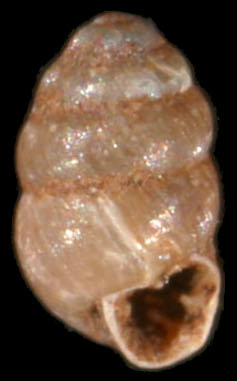
Vertigo pygmaea, common name the "crested vertigo", is a species of minute air-breathing land snail, a terrestrial pulmonate gastropod mollusk in the family Vertiginidae, the whorl snails.

Vertigo ronnebyensis is a species of minute air-breathing land snail, a terrestrial pulmonate gastropod mollusk in the family Vertiginidae, the whorl snails.

Vertigo antivertigo is a species of minute air-breathing land snail, a terrestrial pulmonate gastropod mollusc or micromollusc in the family Vertiginidae, the whorl snails.
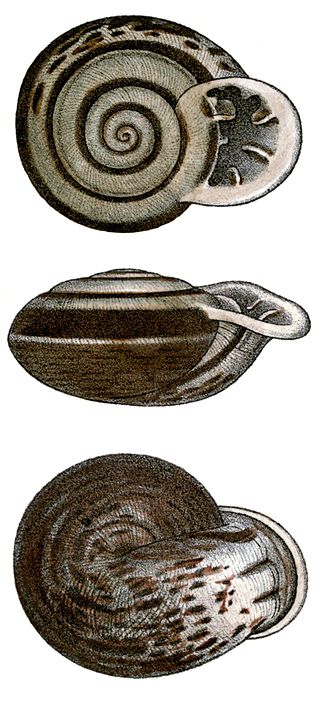
Anostoma, common name the up-mouth snails, is a genus of tropical air-breathing land snails, terrestrial pulmonate gastropod mollusks in the family Odontostomidae. Snails in this genus are found in Brazil.

Anostoma octodentatum, common name Brazilian up-mouth snail, is a species of air-breathing land snail, a terrestrial pulmonate gastropod mollusk in the family Odontostomidae.
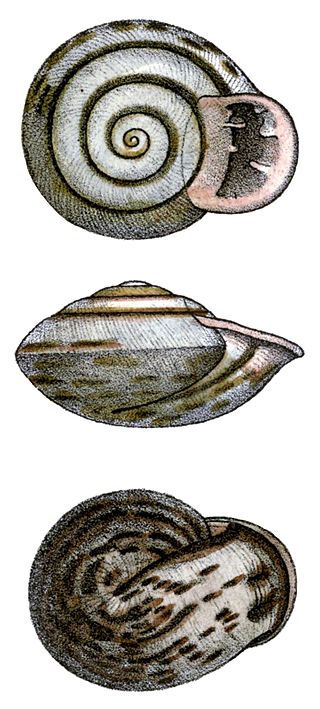
Anostoma depressum is a species of air-breathing land snail, a terrestrial pulmonate gastropod mollusc in the family Odontostomidae.
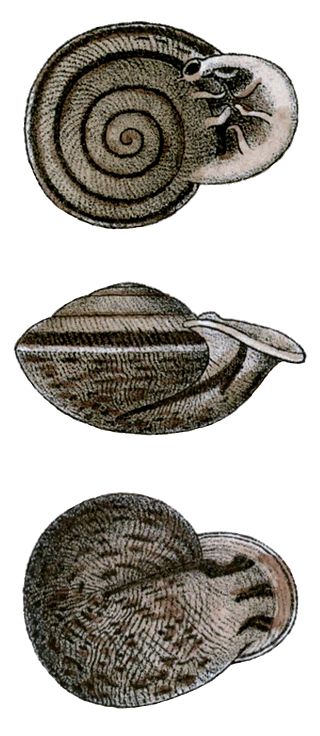
Ringicella ringens is a species of air-breathing land snail, a terrestrial pulmonate gastropod mollusk in the family Odontostomidae.
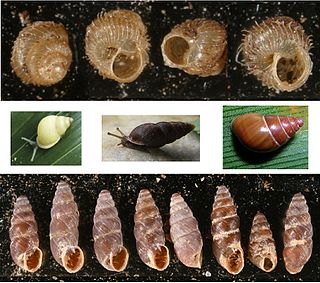
Orthurethra is a clade of air-breathing land snails, terrestrial pulmonate gastropod mollusks in the clade Stylommatophora.

Pupilloidea is a superfamily of small and very small air-breathing land snails, terrestrial gastropod mollusks in the infraorder Pupilloidei.
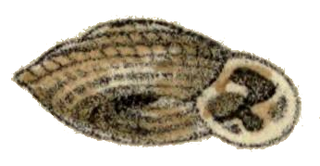
Plectopyloidea is a taxonomic superfamily of air-breathing land snails, terrestrial pulmonate gastropod mollusks in the suborder Helicina.

Eostrobilops hirasei is a species of air-breathing land snail, a terrestrial pulmonate gastropod mollusk in the family Strobilopsidae.
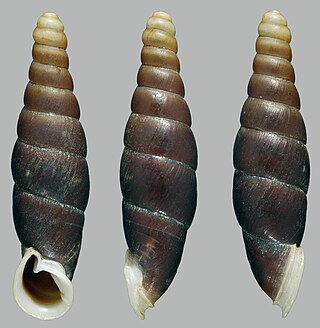
Atractophaedusa smithi is a species of air-breathing land snail, a terrestrial gastropod mollusk in the family Clausiliidae, the door snails.

Spelaeoconcha paganettii is a species of very small air-breathing land snail, terrestrial pulmonate gastropod mollusks in the superfamily Pupilloidea.

Odontostomidae is a taxonomic family of medium-sized to large, air-breathing, tropical and sub-tropical land snails, terrestrial pulmonate gastropod molluscs in the superfamily Orthalicoidea.
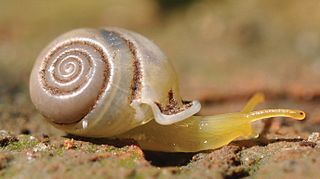
Perrottetia aquilonaris is a species of air-breathing land snail, a terrestrial pulmonate gastropod mollusc in the family Streptaxidae.


















